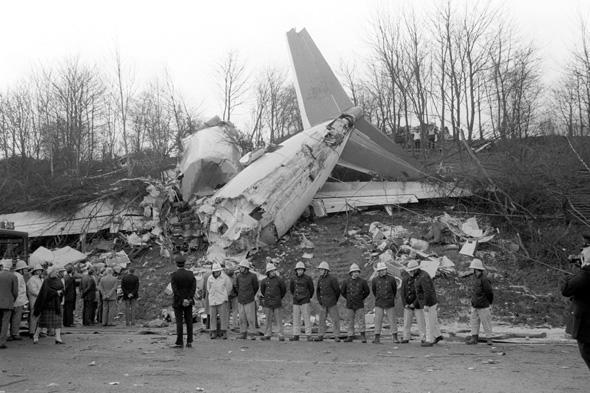Kegworth air disaster anniversary marked

Villagers are marking the 25th anniversary of the Kegworth air disaster today - a tragedy that spread grief from Leicestershire all the way to Belfast.
The British Midland Boeing 737 was travelling to the Northern Ireland capital when it suffered engine trouble and came down on an embankment on the M1 on the night of Sunday January 8 1989.
Many of the 47 people killed in the disaster were from Northern Ireland. The Press Association writes that today, Kegworth Parish Council clerk Lesley Pendleton will lay flowers on a memorial site in Kegworth village and prayers will be said at a Holy Communion service at the local St Andrew's Church.
The plane, with 126 people on board, had taken off from Heathrow airport just before 8am on that fateful Sunday night 25 years ago.
As a pork salad evening meal was being served to the 118 passengers, loud bangs were heard coming from the left-hand engine.
But Captain Kevin Hunt and his co-pilot David McClelland shut down the correctly-working right-hand engine and efforts to make an emergency landing at East Midlands Airport just failed.
Instead, with the runway at East Midlands only a few hundred yards away, the plane, now on fire and with blazing debris dropping from it, came down on the M1 embankment.
Almost miraculously, no one on the ground was injured and, equally amazingly, with the plane in bits, some of the passengers were able to walk away uninjured.
Most of the deaths occurred at the front of the plane, but 79 people, including the two pilots, survived.
Three sisters in a family group of five flying to Co Monaghan for their father's funeral were among the dead. Their deaths had "devastated" their community, said their local priest.
A 13-year-old boy from Lisburn, Co Antrim, arrived back home from a skiing trip to discover his mother and two brothers had died. A company from Portadown, Co Armagh, lost five employees in the disaster.
One of the first on the scene was photographer Jeff Gill, now 73.
He recalled this week: "The aircraft was very low and then suddenly we heard this explosion. I thought everyone would be dead. The plane had come down very close to our house. My son Laban (then 17) and I rushed up to the scene."
"When we got there it was pitch dark but amazingly some people were climbing out of the back of the aircraft. Others were hanging precariously from seatbelts and facing a 20-30ft drop to the ground.
"I managed to look after people as they got out. Incredibly, some seemed unscathed. One guy was wandering around in a bit of a daze, but he was unhurt."
Surgeons carried out more than 80 operations during the first 36 hours after the crash.
A memorial in Kegworth Cemetery was erected by the parish council "to those who died, those who were injured and those who took part in the rescue operation".
Prayers at St Andrew's are being said today by the rector, the Rev Gill Turner-Callis.
Related article
Pilots blamed for Air France crash which killed 228 people



